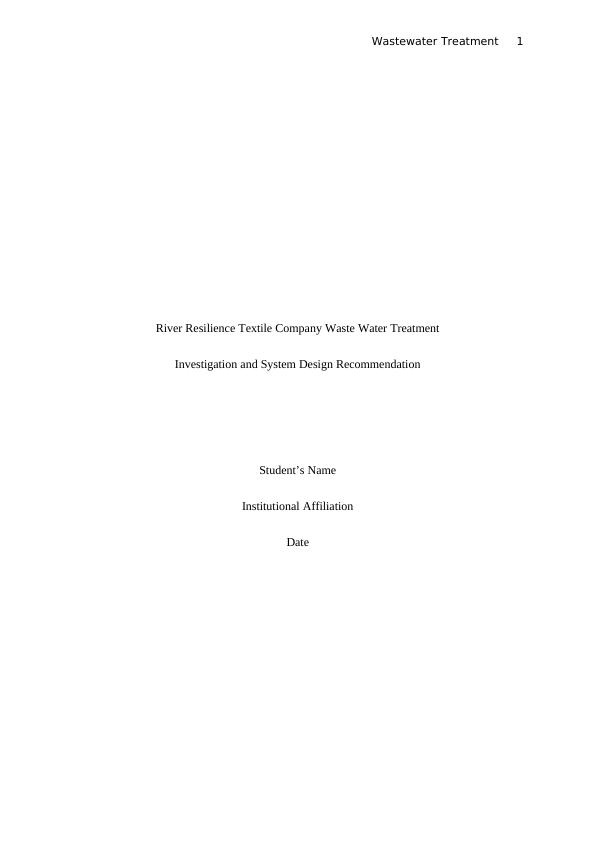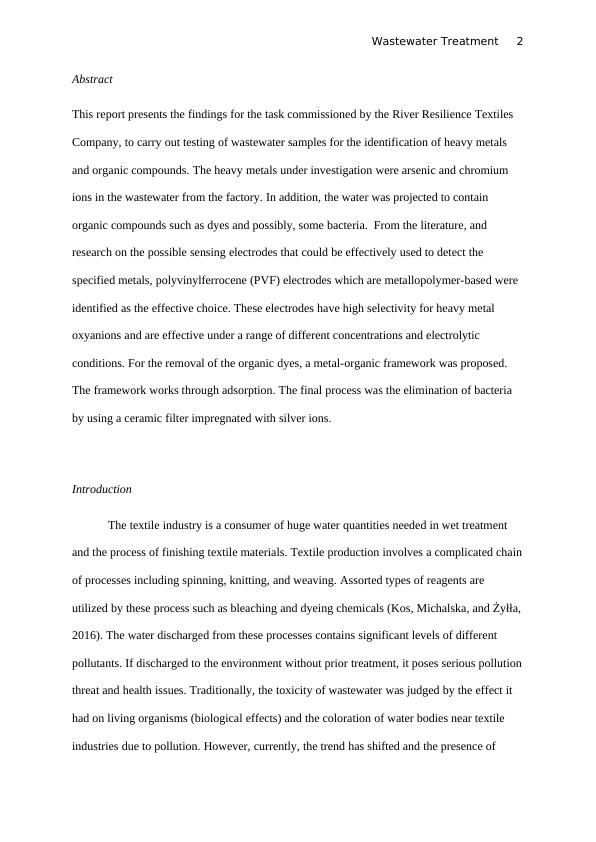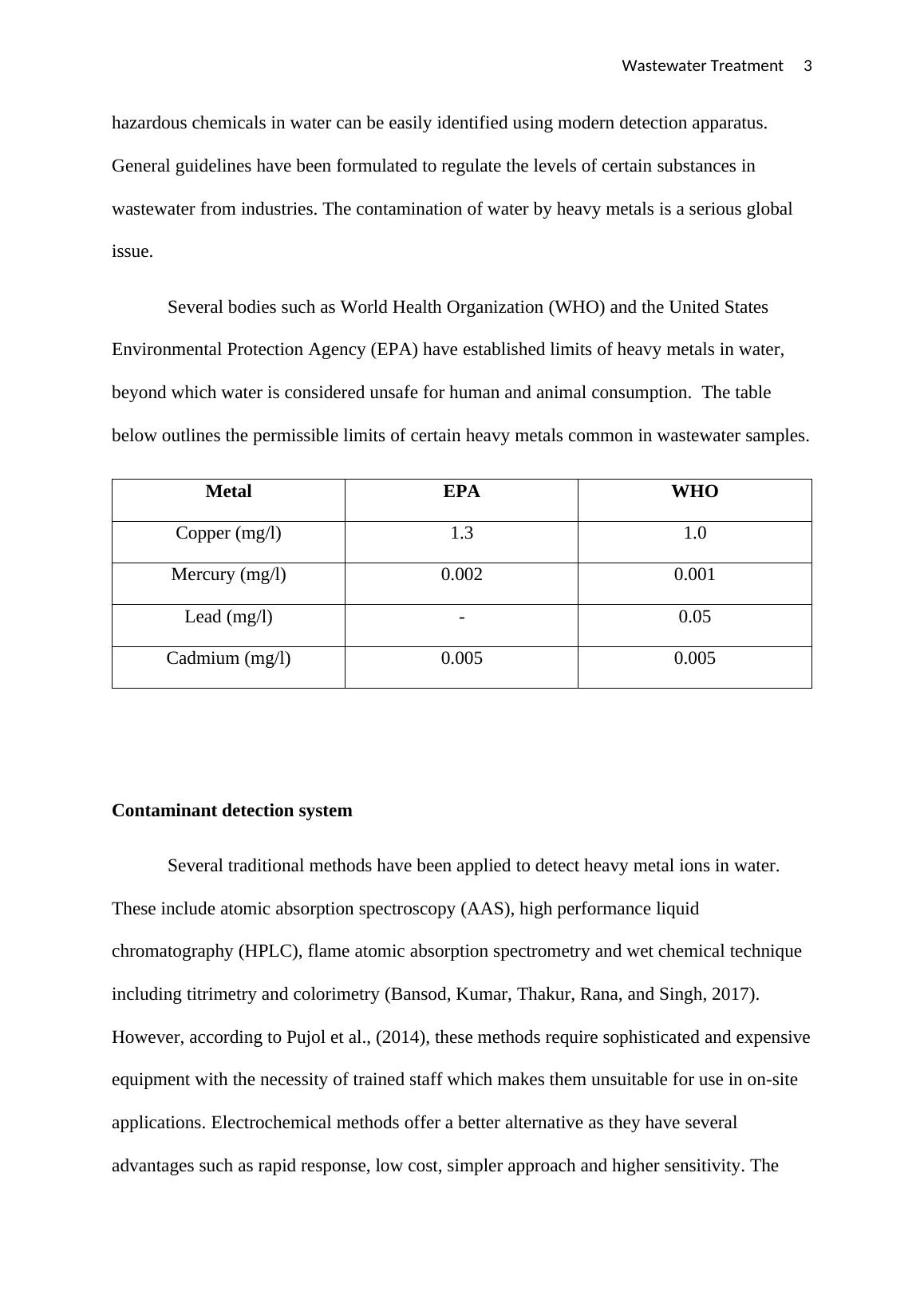Waste Water Treatment Investigation and System Design Recommendation
Recommend a suitable water treatment system for a textile company based on the analysis of water samples containing contaminants such as metal ions, organics, and bacteria.
9 Pages2146 Words16 Views
Added on 2022-08-18
Waste Water Treatment Investigation and System Design Recommendation
Recommend a suitable water treatment system for a textile company based on the analysis of water samples containing contaminants such as metal ions, organics, and bacteria.
Added on 2022-08-18
ShareRelated Documents
End of preview
Want to access all the pages? Upload your documents or become a member.



